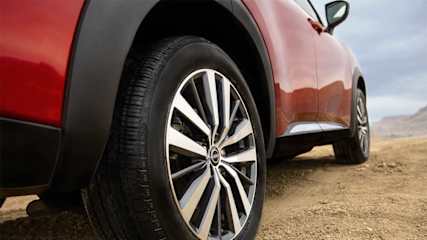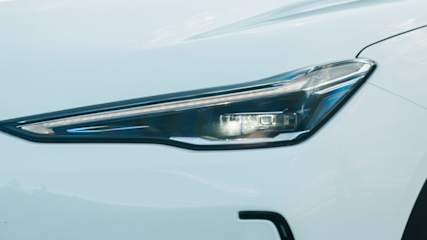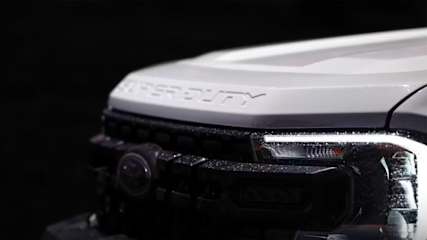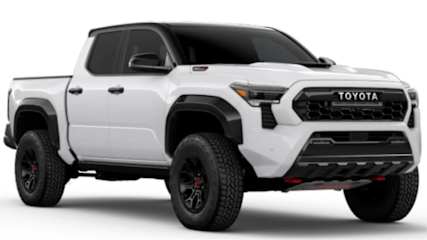2020 Isuzu FSR Reviews
You'll find all our 2020 Isuzu FSR reviews right here. 2020 Isuzu FSR prices range from for the FSR to for the FSR 120 140 240 Lwb.
Our reviews offer detailed analysis of the 's features, design, practicality, fuel consumption, engine and transmission, safety, ownership and what it's like to drive.
The most recent reviews sit up the top of the page, but if you're looking for an older model year or shopping for a used car, scroll down to find Isuzu dating back as far as 2020.
Or, if you just want to read the latest news about the Isuzu FSR, you'll find it all here.
Isuzu Reviews and News
.jpg)
Isuzu D-Max 2026 review: 2.2L
Read the article
By Chris Thompson · 03 Oct 2025
A bigger engine designed to be more powerful and more efficient can only be a good thing for the Isuzu D-Max.
Isuzu’s also gone to the trouble of adding a new gearbox and some new tech to go with it. But is it still a solid pick in an increasingly crowded ute segment?
.jpg)
Best new 4WD features: Key items you'll find in off-road warriors such as the 2026 Ford Ranger PHEV, Kia Tasman, Isuzu MU-X, Land Rover Defender and more
Read the article
By Marcus Craft · 27 Sep 2025
Driver-assist technology is supposed to do just that – assist the driver – but sometimes the application of it in the real world ranges from annoying to bloody atrocious depending on the vehicle you’re driving at the time.

Bigger engine for rugged ute and SUV: Japanese brand to tackle emissions standards with new engine and drive-away pricing specials for 2026 Isuzu D-Max and MU-X, as it gears up to battle Ford Ranger and Everest
Read the article
By Chris Thompson · 25 Sep 2025
Isuzu has replaced its smaller engine option in both its D-Max ute and its MU-X SUV, with a new 2.2-litre engine coming in to join the larger 3.0-litre.
.jpg)
Kia Tasman's next move exposed: The 2026 Kia Tasman ute’s next step against the Ford Ranger, BYD Shark 6 and Toyota HiLux to be hybrid power
Read the article
By Byron Mathioudakis · 12 Aug 2025
Where does the Kia Tasman go from here?
Is having a conventional diesel engine as the sole choice enough to run with the best-sellers?
Should the Tasman follow the lead of the Ranger Raptor by going down the off-road performance path, to create a halo model for the rest of the range to bask beneath?
Or is going hybrid the answer?
The answer may shock you!

Family SUV faces the chop: Rival to the 2026 Toyota Kluger, Ford Everest, Kia Sorento and Hyundai Santa Fe could be axed in Australia
Read the article
By Byron Mathioudakis · 06 Jun 2025
It now seems inevitable that one of world’s longest-running family SUV badges may soon be retired in Australia. With low sales and high pricing pressures due to unfavourable exchange rates and ongoing geo-political uncertainties, the Nissan Pathfinder is facing an uncertain future, as it continues to stumble against popular alternatives in the large, seven-seater SUV segment like the Ford Everest,

Save thousands with these new car deals: All the end of financial year deals from car brands in Australia
Read the article
By Jack Quick · 01 Jun 2025
It’s EOFY time again!

2026 Ford Ranger will break new ground and move beyond established rivals the Toyota HiLux, BYD Shark 6, Nissan Navara and Mitsubishi Triton
Read the article
By Byron Mathioudakis · 17 May 2025
Are you an owner/driver of an Isuzu N Series, Fuso Canter or Hino 300 small truck? Then this might be for you, because Ford is banking on breaking into the light duty (LD) truck class with something completely different to the cab-over chassis norm with the coming Ranger Super Duty.
.jpg)
The best used car options in Australia
Read the article
By David Morley · 12 May 2025
It’s often said that if you’re a smart car buyer, you’ll be shopping second hand. That’s because the shine and new car smell of a brand-new car can be fleeting. Especially once you take depreciation into account.

The new Toyota HiLux we should get! Here are four reasons why the Toyota Tacoma-based Toyota HiLux won't be bothering the Ford Ranger, BYD Shark 6 and other utes in Australia ... and one reason why it still might!
Read the article
By Byron Mathioudakis · 11 May 2025
Where on earth is the Toyota Tacoma for Australia?Designed and developed expressly for the North American market, the series has served for over 30 years as the slightly larger and more comfortable cousin to the venerable Toyota HiLux.In fact, the two medium-sized utes were closely related until very recently, even as the Tacoma grew larger and more sophisticated over three generations, where it became the best-selling vehicle in its pick-up segment in the United States – a position held since 2004.Unveiled in 2023, the latest version prompted a high level of anticipation from industry analysts, since it was also expected to become the replacement for the eighth-gen HiLux, which celebrates its 10 anniversary this month.After all, the Tacoma’s timing was spot-on, with the newly-redesigned Ford Ranger ending the Toyota ute’s seven-year reign at the top of the Australian sales charts that same year (and hit number one again in 2024).It doesn’t take too much to figure out why people remain excited about the prospect of a HiLux-badged Tacoma for our market.Key attributes include a formidable presence brought about by its chunky styling, a vast array of grades including a Raptor-aping TRD Pro, huge interior space, sizeable load area, massive step up in safety technology and the availability of a hybrid powertrain option.The Tacoma trails Australia’s 3500kg braked towing capacity maximum yardstick by around 500kg, based on corresponding Canadian figures.That would probably change for our market, especially when you consider that today’s Tacoma is based on the same Toyota New Global Architecture – Frame (TNGA-F) body-on-frame “truck” platform that also underpins the J300 LandCruiser and J250 Prado 4WD SUVs.It is that connection that prompted much speculation over when – rather than if – the Tacoma would arrive in Australia, albeit wearing HiLux badges and possibly having Thai sourcing. After all, if they’re that closely related, wouldn’t they have interchangeable parts with models already offered in this market?As it turns out, Toyota will instead offer three distinctly different medium-sized utes – and it seems Australia will again miss out on the Tacoma after all… or at least, for now.Though unconfirmed officially, we hear from an internal source that a facelifted version of the existing, decade-old Mk8 HiLux will spearhead Toyota’s fight against the Ranger, BYD Shark 6 and co. from next year in Australia.About the only part of the Tacoma – which will remain North American only for the time being – we may see is a variation of its 2.4-litre i-Force turbo-petrol/electric hybrid powertrain, as it has been rumoured to be added to the HiLux facelift, as Toyota Australia starts its move away from diesel.Finally, as outlined previously, Europe, Japan and other lower-carbon regions are set to score the production version of the EPU (Electric Pick-Up) Concept Ute electric vehicle from the 2023 Tokyo Mobility show, though that’s also mooted for Australia too, as a flagship HiLux EV.So, what’s holding the Tacoma back for us?Mainly, it is only produced in Mexico, with annual capacity of around 250,000. And that’s about how many are soaked up in North America alone.Secondly – and this is a major reason – the Tacoma is only currently manufactured in left-hand drive (LHD) guise. And changing that makes no business sense.Typically, engineering for right-hand drive (RHD) in any vehicle program can add hundreds of millions of dollars to costs, and that appears not to have happened in this case. And it's not likely to in the future.Why? Even if Toyota could sell over 50,000 utes annually to match HiLux’s efforts last year in Australia – and that would possibly make us the fictional RHD Tacoma's largest market globally – that’s not nearly enough production volume to recoup development costs.That was reportedly one of the driving forces behind General Motors killing Holden barely two years after local manufacturing ceased in 2017, as there just wasn’t enough volume to justify the expense of changing LHD vehicles over to RHD for Australia. Even for a colossus like Toyota.Additionally, while the UK is another big RHD ute market for the brand, shifting around 30,000 HiLuxes last year, that's still not enough volume, while the vast majority of South African and Thai ute sales - the two remaining big RHD countries – are for more-affordable and lower-spec models. And cheap is not what any TNGA-F vehicle is designed to be.That’s probably the reason why the Tacoma is not earmarked to be built in Thailand, for now anyway. The existing HiLux fills that role far better.Thirdly, should it be green lit for RHD, the Tacoma would also be too expensive even in Australia, anyway, given its Mexican sourcing.This means the cheapest grade would probably cost a lot more than the current most expensive HiLux out of Thailand does. Which, by the way, is also where the Ranger, Isuzu D-Max, Mazda BT-50, Nissan Navara and Mitsubishi Triton also hail from, while the Shark 6, GWM Cannon, LDV Terron 9 and others from China cost even less for what they offer.Tacoma would have no hope matching their prices. The upshot here is that achieving something close to the current HiLux's 50,000 sales annually in Australia would be wildly optimistic as a result.Lastly, with Tacoma sales in the first quarter of 2025 up nearly 180 per cent year-on-year in the USA, there is no incentive for Toyota to compromise production capacity to accommodate the relatively small volume required for Australia.Of course, this could change with the US federal government’s tariffs on non-US made products, that might lead to big price increases for the Tacoma in its main market.While still highly unlikely, that might open the door for RHD exports should US Tacoma sales consequently collapse, though these are still early days.That’s a long shot, and it’s fair to assume that the only way Australians might be able to buy a reasonably-priced Tacoma is if Toyota decides to add production to Thailand, or some other lower-cost base than Mexico. Or follow the larger Tundra ute’s example by having it remanufactured from LHD to RHD in Melbourne.So, no Tacoma-based HiLux, then.Which is a shame, as a ute version of the latest Prado – which what the latest, N400 model essentially is, complete with an i-Force petrol-electric hybrid powertrain – would sound like the HiLux that Toyota should be offering to its fanatically loyal Australian customer base.Do you agree?

Why size doesn't matter when it comes to the price of a car | Opinion
Read the article
By Tim Nicholson · 08 May 2025
Does size matter? It’s an age-old question but when it comes to cars, it’s complicated.Most car reviews - rightly - will cover whether the model represents good value for money. That will usually include a focus on what is and isn’t included in the standard features list, the safety offering, quality of materials and more.Often this will include whether you get enough metal for your money. Is the car big enough for the price?My question is, should size factor into the value of a car? And how do you fairly determine value when each buyer has a different budget?I understand that everyone has different requirements when looking for a new car. A family of five will require more space than a family of two, or a single person, for example.But I would argue that size should not determine whether a car represents good or bad value for money.Again, I appreciate that many people will want as much car as they can get for their money, based on how they will use it. But surely things like overall vehicle quality, the drive experience and how the car makes you feel are just as important.Here’s an example. A Honda Civic e:HEV L costs $49,900 (drive-away). When compared with old foes like the Mazda3 and Toyota Corolla, it is seen as being quite a lot of money for a small hatchback.For roughly the same price as the Civic, you could buy an entry grade large seven-seat SUV like a Kia Sorento, Hyundai Santa Fe, Isuzu MU-X, or a Toyota Kluger.But just because you can get a bigger car for the same price, should you?If you don’t need the space, then I say you shouldn’t. And not just for reasons like the environmental impact of large vehicles, or the sheer space it takes up on the road. Although those reasons are also valid.If a smaller car ticks other boxes including being fun to drive, that should be enough.Back to my example - the Honda Civic hybrid is an excellent car. I would argue it’s the best small passenger car (as in, not an SUV) on sale in Australia. It has excellent build quality, a solid standard features list, a handsome design, nicely executed interior and an exceptional and efficient powertrain.Something like that is a perfect car for me. And I don’t feel like I would be ripped off buying this instead of a larger car.Similarly, if someone has the means to buy a premium car instead of something from a mainstream brand, that’s fine. As Donna Meagle famously said in Parks and Recreation, “Treat yo’self!”Sure, a circa-$60,000 BMW 120 hatch may not have the same level of standard features as a higher grade Toyota Corolla or Mazda3 - which cost $20,000 less - but who cares?If you have your heart set on a premium car like a BMW and you’ve got the money for it, then it doesn’t matter if it’s missing a few features.Whether it’s the materials in the cabin, the way it drives or the feeling you get when driving a premium European car, a model like that often just feels more special.A couple of years back I lived with a Peugeot 308 Premium GT hatchback for four months. That specific grade at the time was priced at $48,990 before on-road costs. Again, there was a lot of commentary about that being a lot of money “for a small hatchback”.I am not suggesting it’s cheap - it clearly isn’t. But that is an excellent little car that made me smile every time I got behind the wheel. I would be happy - proud even - to own one.To reiterate, there is nothing wrong with trying to get as much car as possible for your budget. If you want as many standard features as you can possibly get for $40k, and you are less fussed about how the car drives or its perceived quality, terrific. And there’s no shortage of options, especially with the growing number of Chinese brands offering affordable models.But equally, no one should be shamed for spending big bucks on a car that isn’t the size of a boat, or if it doesn’t tick every single box on the standard features list.




